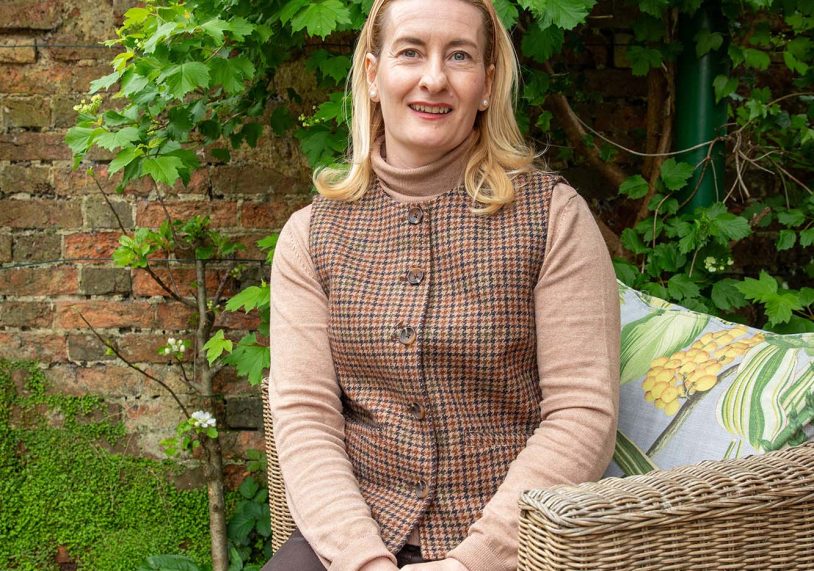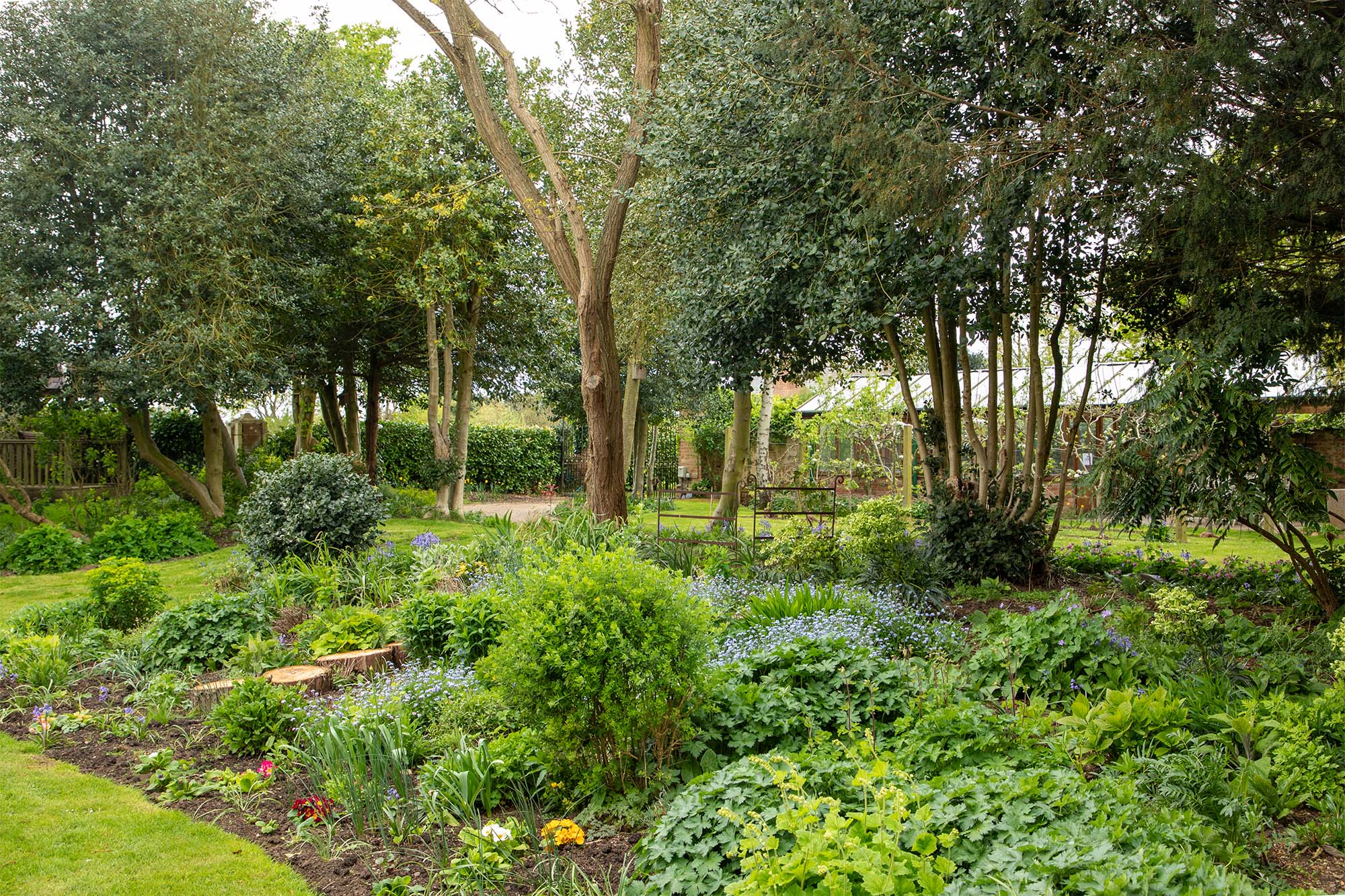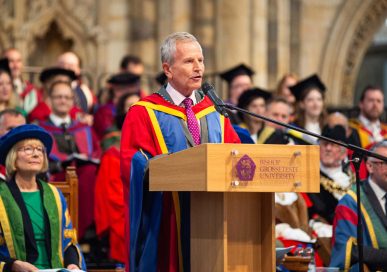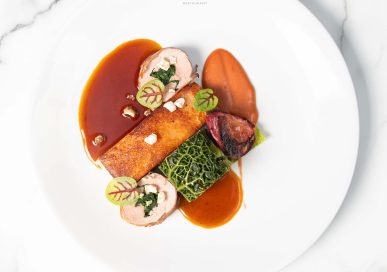Bardney Walled Gardens
Horticulture meets heritage this month as we provide an exciting update on Lady Samantha Bardney’s plans to restore the walled gardens surrounding her 17th century manor house, in recognition of its previous custodian. John Sutton Sharpe’s work as a horticulturist, seed merchant and farmer attracted huge acclaim in the Victorian era, even attracting visits from Gertrude Jekyll and Queen Victoria…
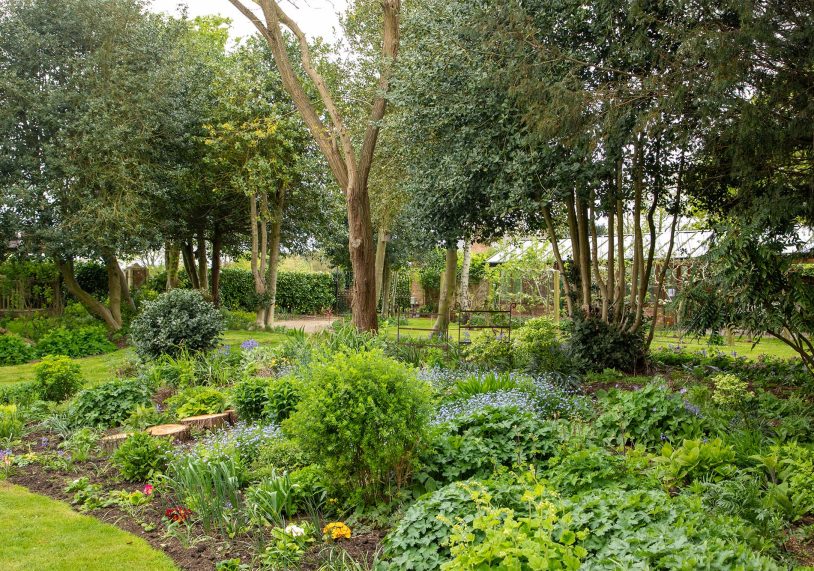
History and horticulture are combining right now, with the continuing restoration of one of Lincolnshire’s lesser-known but still hugely important heritage gardens. We’ve been keeping a close eye on the project and were delighted to pay a return visit to Bardney Walled Gardens to see how Lady Samantha Wright was getting on bringing the gardens formerly belonging to John Sutton Sharpe back to life.
“It’s serendipity really,” says Samantha. “I always say that we didn’t find the garden; the garden found us. I was already interested in heritage seed varieties and during the Covid lockdown, established a company called Seedology, trading them online via eBay and Etsy, and producing my own wildflower seeds from a three acre site.”
“My husband Martyn and I fell in love with Bardney Manor the moment we saw it, but in hindsight I think I could barely remember the house itself, I was just excited by the prospect of being able to make something of the garden.”
“I soon discovered a little more about the history of the place from locals. But as I uncovered more of the history I discovered a genuine enthusiasm for the garden from those who lived in the area and began to feel a genuine responsibility – a real obligation – to make sure that in the future as many people could enjoy it as possible.”
We’re getting ahead of ourselves. First, a quick history lesson. Around the 1830s in Sleaford a very successful seed merchant named John Sharpe established a profitable business in the town, and raised two sons, John (b.1827) and Charles (b.1830) with his wife Charlotte at their home, The Pines, on the town’s Boston Road.
Sharpe’s Seeds was a great success, recording a profit of £29,220 (the equivalent of £2.3m today) at its peak in 1917, and ultimately becoming one of the leading seed merchants in the UK creating the ‘Sharpe’s Express’ potato still available today.
In a plot twist vaguely reminiscent of a Shakespearean tragedy, the younger John fell in love with Marion, the daughter of the rival seed merchant, Suttons. Think Romeo & Juliet with seed-cross’d lovers, and Sleaford instead of Verona. The elder son’s relationship caused a huge rift in the family and his father all but disowned John, continuing to run Sharpe’s Seeds with Charles in Sleaford before his death in 1854. The business was valued at £250,000 (about £23m today) but John Sutton Sharpe was left just £10 by his father.
Charles continued to run the business until his death in 1897 aged 67, whilst Sharpe’s Seeds traded well into the second half of the 20th century, introducing new varieties of hybrid seeds, and supplying grass seed to HM The Queen and to Wembley Stadium before the first of a number of takeovers in the 1980s.
Meanwhile, upon his exile, John Sutton Sharpe moved to Bardney with Marion. The couple’s home was a manorial dwelling (first recorded in the Domesday book) adjacent to St Lawrence Church. Upon settling in the village the couple established their own successful business, creating what it believed to be one of the largest walled kitchen gardens in the C18th, yielding grape trusses up to 12lb, plus unusual soft fruits for the age from tangerines to pineapples.
In addition to serving as a site for John to ‘experiment’ with new varieties, the land surrounding the Manor was also a successful farming operation. Such a gifted farmer and horticulturalist was John, that visitors to Bardney Manor’s grounds included the Victorian landscape gardener and horticulturalist Gertrude Jekyll and also Queen Victoria (probably in 1835).
As the historic significance of Bardney Manor’s walled garden became apparent, Samantha’s own reputation as a horticulturalist was also growing. In 2021 she was invited to produce a show border for BBC Gardener’s World, but the design was so inspiring that it was upgraded in scope to a full garden and was subsequently awarded a silver gilt.
Now very much in demand on the UK’s horticulturalist scene, Samantha found herself speaking to one of the world’s most renowned garden designers, Professor David Stevens, a holder of the no fewer than 26 RHS Chelsea Flower Show medals and three Best in Show awards.
David is also the author of 21 books on landscaping and garden design, broadcaster and, so it turns out, a John Sutton Sharpe aficionado. When David discovered that Samantha and Martyn had moved to the property and were embarking on a restoration of the site, he promptly invited himself over for the weekend to see the place for himself.
Over breakfast the following morning, David was missing and when Samantha asked David’s wife where he’d disappeared to, she answered – with the roll of the eyes only a long-suffering wife can execute – that he’d been up all night, unable to sleep, excitedly sketching plans for the garden in his head.
Declaring an interest in helping Samantha to redesign the walled garden of Bardney Manor, David had soon created detailed planting schemes, descriptions of materials, drainage systems and draftsman’s drawings, the result was a spectacular overall plan to produce what will become undoubtedly become the most interesting heritage garden in Lincolnshire upon its completion.
During our visit a few weeks ago, the groundworks were progressing nicely with drainage and electrical infrastructure in place. Over the next year the site will be transformed as David and Samantha’s project comes to fruition.
“The more the heritage of the garden and the significance of John Sutton Sharpe to the field of horticulture became apparent, the greater the need we saw to ensure the garden would also serve as a tribute to him and a real celebration of Lincolnshire’s horticultural heritage, too,” says Samantha.
The walled gardens that the two have designed will be reached by the ‘secret gate’ to the east of the garden with four individual areas each themed around one of Victorian poet, Somerby-born Alfred, Lord Tennyson’s poems – we know which ones but we’re obliged to maintain the surprise. These gardens will lead to a pergola and onto a full kitchen garden which continues west with a Victorian dipping pool and heritage varieties with connections to John Sutton Sharpe.
Reclaimed timber from Lincolnshire, Corten steel and various seating areas will feature, along with gravel pathways. The garden to the front of Bardney Manor has already been given a spectacular redesign, with a display of heritage roses; 24 varieties are all themed around ‘Ladies’ created in conjunction with David Austen; varieties include Lady Elizabeth, Lady Anne, Judy Dench, Brontë and Gertrude Jekyll.
The garden features bulbs from Lincolnshire’s Taylor’s Bulbs and Bells, who will also contribute to the rest of the walled garden’s planting schemes.
Samantha has also created the Blacksmith’s Studio which offers teas and coffees – including traditional afternoon teas by prior arrangement – plus somewhere for visiting groups to rest and it also serves as a gallery to display art and crafts from local talent.
As well as hosting groups like Lincolnshire’s Hardy Plant Society, Samantha will host NGS events from next year, in between working hard to bring her vision for a beautifully refurbished garden to celebrate John Sutton Sharpe’s legacy to fruition next year.
Bardney Manor Walled Garden is open on Thurs and Sun, May to August, adjacent to St Lawrence Church, Bardney, LN3 5TZ, see www.bardneymanorwalledgarden.com.
